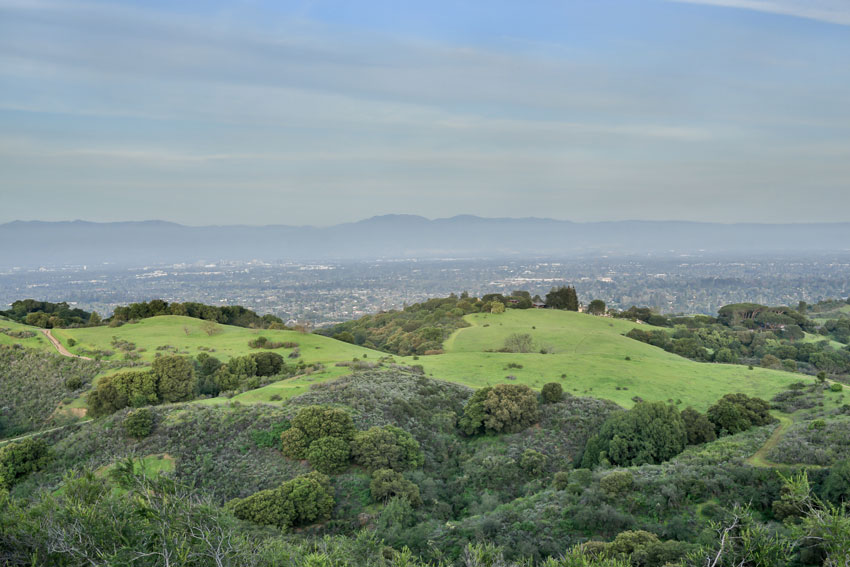Midpen Becomes First Open Space District to Adopt a Climate Action Plan
San Francisco Mid Peninsula (Silicon Valley) from up above, in spring.
On the heels of a landmark report released, recently, by the Intergovernmental Panel on Climate Change, the Midpeninsula Regional Open Space District’s Board approved its own climate change policy and action plan at a public meeting last night, setting ambitious emission reduction goals for the organization and providing a roadmap to achieve them. While many National Parks and municipal governments have similar plans, Midpen’s is the first for an open space district.
“By taking steps to reduce emissions internally we hope to catalyze our community into action and contribute towards stabilizing the climate to protect life in all its forms,” said Midpen’s General Manager Ana María Ruiz. “Midpen has an opportunity and a responsibility as an environmental agency to lead by example.”
Greenhouse gases released from burning fossil fuels for transportation and energy are changing the climate. The Bay Area is already experiencing warmer temperatures, changes to plant and animal habitat ranges, more intense wildfires, sea level rise and more frequent droughts and floods. Key solutions are reducing emissions and facilitating the movement of carbon from the atmosphere into plants and soils, known as carbon sequestration, through land conservation and management. Midpen stewards more than 63,000 acres of public open space, including redwood forests, which store large amounts of carbon.
Midpen is targeting a reduction in emissions of 20% below its 2016 baseline by 2022, 40% by 2030 and 80% by 2050. This goal is in line with the State of California’s climate change policy and the Paris Climate Agreement, which aims to limit global warming to two degrees Celsius. Midpen will achieve its goal by reducing emissions from vehicles, equipment, employee commutes, business travel, offices and tenant residences.
Midpen has already taken initial steps by switching to using renewable diesel fuel in September, installing electric vehicle chargers, acquiring a plug-in hybrid and replacing three ranger trucks with more efficient vehicles. Field staff are testing electric bicycles for patrol and electric equipment, such as chainsaws and brush cutters, for maintenance. The plan also identifies strategies for reducing or offsetting emissions from livestock grazing in Midpen’s open space preserves, enhancing carbon sequestration, reducing preserve visitor transportation emissions and increasing staff and visitor awareness of climate change.
The Midpeninsula Regional Open Space District is a public agency created by voters in 1972. Its mission is to acquire and preserve in perpetuity open space land and agricultural land of regional significance, protect and restore the natural environment and provide opportunities for ecologically sensitive public enjoyment and education.
Interested readers can learn more about Midpen’s full Climate Action Plan at www.openspace.org/climate


